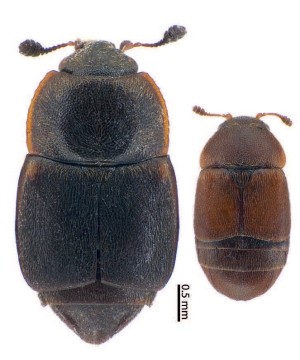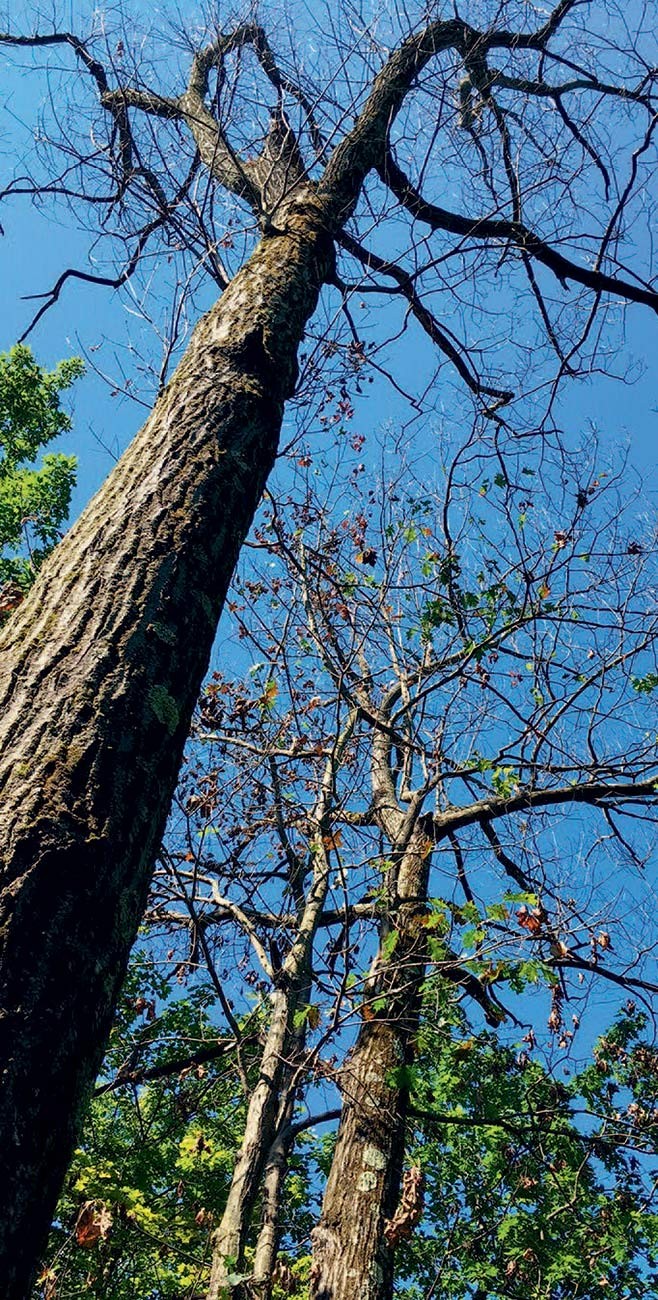
Oak wilt has killed millions of trees in 24 states throughout the Midwest and south to Texas and is – slowly, for now – spreading into the Northeast. Scientists first described this devastating fungal disease in 1944, although its origin is unknown. There is debate about whether oak wilt is a native or exotic pathogen, but it does not appear to be present on any other continent. While oak wilt’s movement northward has been gradual, the warming climate may accelerate its spread.
The New York Department of Environmental Conservation reported its first detection of oak wilt in 2008, and in 2023, the Canadian Food Inspection Agency confirmed its presence in Niagara Falls, Ontario. To date, New York infestations are isolated to small areas on Long Island, in Brooklyn, near Albany, and in the Finger Lakes region. However, these recent northerly detections in New York and Canada have raised the alert level for New England states.
The disease, caused by the fungus Bretziella fagacearum (formerly Ceratocystis fagacearum), kills its host by disrupting the transport of water throughout the tree, and, as its name suggests, causes leaves to wilt and drop prematurely from the top of the tree downward. These symptoms typically appear in July. Host trees include all species of oak, with red oaks (including scarlet, pin, and black oak in the Northeast) being the most susceptible. Infected red oak trees can die rapidly within a month of infection. White oaks (including bur and scrub oak), which form tyloses – an overgrowth of cells that block off water movement and therefore impede the spread of pathogens – die more slowly.
There are look-a-like symptoms that are easy to confuse with oak wilt, including those associated with drought, bacterial leaf scorch, Botryosphaeria canker, Tubakia leaf spot, sudden oak death (Phytophthora ramorum), and anthracnose. None of these other threats to oaks, however, are likely to cause rapid wilt and complete leaf drop in midsummer.
The fungus that causes oak wilt can spread between trees in two ways. The first is aboveground by beetles. After an infected tree dies, it may produce aromatic fungal mats that are coated with spores. (Red oaks are much more likely than white oaks to produce spore mats.) These mats, sometimes called pressure pads, force the bark to crack open, releasing an odor that resembles fermented fruit or vinegar. The odor attracts numerous species of sap-feeding beetles from the Nitidulidae family. The beetles pick up the spores when feeding within the fungal mats and then spread them to other trees, for example, when they feed on sap flowing from a mostly healthy tree that has a sap-producing wound. For this reason, it is important not to prune oak trees in the spring when the beetles are active.
The disease can also spread locally through root grafts – where tree roots of the same species grow together. Root grafting is more common in sandy soils and can lead to new infections of healthy trees more than 100 feet from an infected tree.
Control of oak wilt is difficult and involves disrupting root grafts and the complete removal of infected trees as well as buffers of healthy trees. A first step for a landowner encountering diseased trees should be to seek guidance from a state forestry agency or cooperative extension office. This discussion should include site conditions. For example, vibratory plows with 5-foot blades are the preferred tool for disrupting infected root grafts in sandy or loamy soils. However, this method is impractical in rocky soil. Stump extraction may work well in settings such as yards, but is cost prohibitive in forest settings. Herbicides can be effective at slowing the spread of the fungus into the roots when applied to infected trees, but are not appropriate for every setting.
Prevention measures in areas where the disease is present, such as limiting pruning to winter and avoiding injury to healthy trees, can help slow oak wilt’s spread. If you are in a known infection area and have a damaged tree, consider applying tree paint on fresh wounds to deter beetles. Avoid moving or storing oak firewood in infection areas, as the fungus can survive on improperly dried wood and spread to healthy trees. And again, if you suspect you have seen signs of oak wilt, contact your state forestry agency or cooperative extension office.


